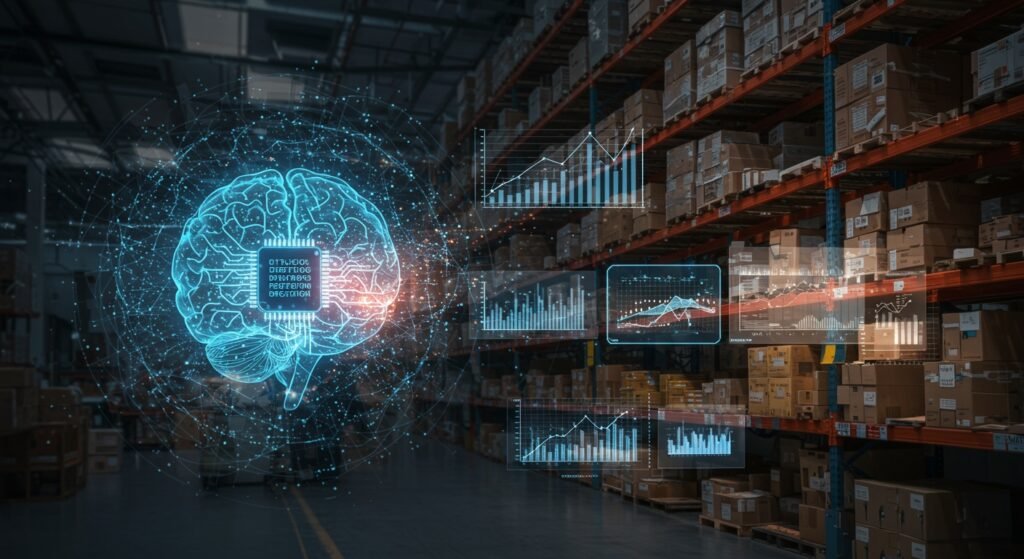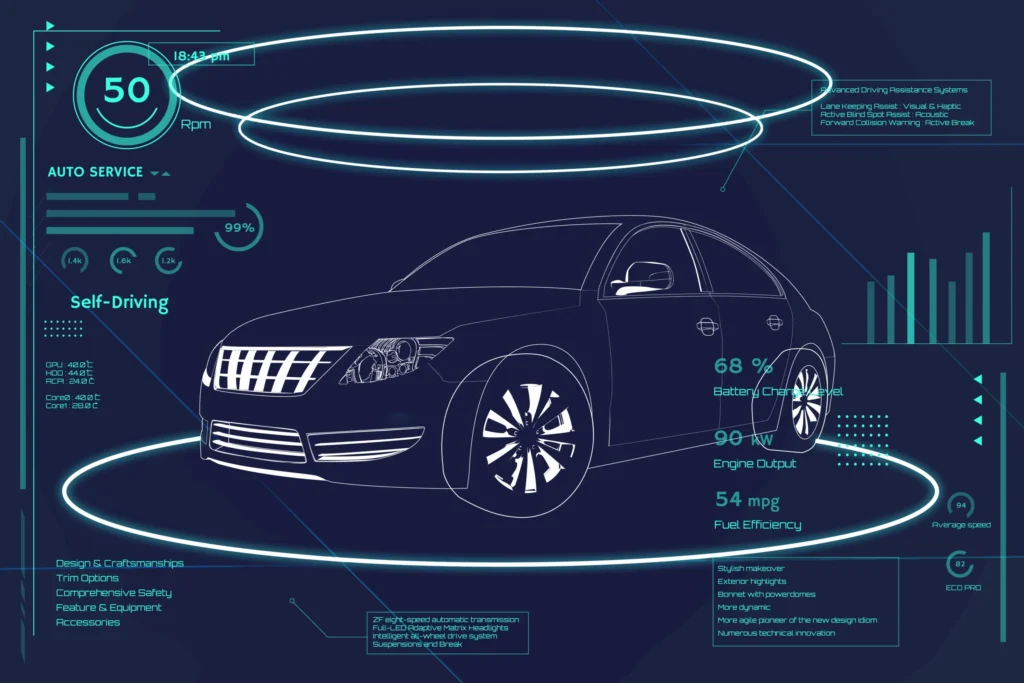In today’s fast-paced global economy, anticipating customer needs and market shifts is no longer a luxury but a necessity. Traditional demand forecasting methods, often reliant on historical data and manual adjustments, struggle to keep pace with modern complexities. This is where AI-Powered Demand Forecasting steps in, offering a revolutionary approach that leverages machine learning and advanced analytics to predict future demand with unprecedented accuracy. Businesses across various sectors are adopting this technology to optimize their operations, reduce costs, and enhance customer satisfaction, ushering in an era of intelligent, proactive decision-making. The ability to predict demand with greater precision directly impacts inventory management, production planning, and resource allocation, creating a significant competitive advantage.
What is AI-Powered Demand Forecasting?
AI-Powered Demand Forecasting refers to the application of artificial intelligence and machine learning algorithms to analyze vast datasets and predict future customer demand for products or services. Unlike traditional statistical models that often rely on linear relationships and historical averages, AI models can identify complex, non-linear patterns, account for multiple external factors (like economic indicators, weather, social media trends, competitor activities), and adapt to changing market conditions in real-time. This sophisticated approach leads to significantly more accurate and dynamic predictions.
Traditional vs. AI Methods
Traditional methods typically use time-series analysis (e.g., ARIMA, Exponential Smoothing) and often require significant human intervention for adjustments. While effective for stable environments, they falter in volatile markets. AI methods, conversely, employ algorithms such as neural networks, gradient boosting, and deep learning, which can self-learn from data, recognize subtle shifts, and continuously refine their predictions without constant manual oversight. This self-improving capability is a game-changer for businesses.
The Evolution of Demand Forecasting
Demand forecasting has come a long way from simple gut feelings and basic historical averages. The advent of statistical methods in the mid-20th century brought a scientific approach, using quantitative models to extrapolate future trends from past sales. The digital revolution further enhanced this by allowing for the processing of larger datasets. However, it is the current era of artificial intelligence that has truly transformed the landscape. AI systems can process petabytes of structured and unstructured data, learning from patterns that are invisible to human analysts or simpler algorithms, thereby offering a more holistic and predictive view of the market.
Key Benefits of AI in Forecasting
Integrating AI into demand forecasting processes unlocks a multitude of advantages for businesses aiming for operational excellence.
Enhanced Accuracy and Reliability
AI models excel at identifying subtle trends, seasonality, and external variables that significantly impact demand. This leads to more precise predictions, reducing both overstocking and understocking, which are common and costly issues for many organizations. The reliability of these forecasts means businesses can plan with greater confidence.
Operational Efficiency and Cost Reduction
Accurate demand forecasts directly translate into optimized inventory levels, reduced waste, lower carrying costs, and streamlined production schedules. This efficiency extends to labor planning, transportation logistics, and raw material procurement, all contributing to substantial cost savings. For more insights into optimizing your operations, explore our guide on Operational Efficiency Strategies.
Improved Customer Satisfaction
By ensuring products are available when and where customers want them, businesses can significantly enhance the customer experience. Fewer stockouts mean fewer lost sales and happier customers, fostering brand loyalty and repeat business. This proactive approach to meeting demand strengthens customer relationships.
Agility and Responsiveness
AI systems can rapidly process new data and update forecasts, allowing businesses to react quickly to sudden market changes, unexpected events (like supply chain disruptions or new competitor products), and evolving consumer preferences. This agility is crucial in today’s dynamic marketplace, enabling swift, data-driven decisions.
How AI Models Predict Future Demand
AI-powered demand forecasting utilizes various machine learning techniques to analyze historical sales data alongside a myriad of other influencing factors. These models don’t just look at ‘what happened’; they strive to understand ‘why it happened’ and ‘what is likely to happen next’. Algorithms like recurrent neural networks (RNNs) are particularly adept at processing sequential data over time, making them ideal for time-series forecasting. Other methods include ensemble models like Random Forests or Gradient Boosting Machines, which combine multiple decision trees to yield highly accurate predictions by considering a wide array of features such as promotional activities, pricing strategies, economic indicators, and even social media sentiment.
| Period | Actual Demand (Units) | Traditional Forecast (Units) | AI Forecast (Units) | Accuracy Gain (AI vs. Traditional) |
|---|---|---|---|---|
| Q1 2023 | 1,250 | 1,100 | 1,240 | 12.7% |
| Q2 2023 | 1,400 | 1,350 | 1,410 | 1.4% |
| Q3 2023 | 1,180 | 1,250 | 1,170 | -6.4% |
| Q4 2023 | 1,620 | 1,500 | 1,615 | 7.7% |
| Q1 2024 (Predicted) | – | 1,300 | 1,450 | N/A |
As illustrated in the table above, AI forecasts often demonstrate superior accuracy compared to traditional methods, leading to more informed business decisions.
Implementing AI-Powered Solutions
The successful implementation of AI-powered demand forecasting requires a strategic approach. It begins with defining clear objectives, assessing the quality and availability of data, and selecting the appropriate AI tools or platforms. Businesses often start with pilot projects to validate the technology’s effectiveness before a full-scale rollout. Crucially, it involves integrating the AI system with existing enterprise resource planning (ERP) and supply chain management (SCM) systems to ensure seamless data flow and actionable insights. Training employees on how to interact with and trust the new system is also vital for adoption and long-term success. Collaboration between data scientists, business analysts, and operational teams is essential to fine-tune models and interpret results effectively.
Challenges and Future Trends in AI-Powered Demand Forecasting
While the benefits are clear, implementing AI for demand forecasting isn’t without its hurdles.
Data Quality and Integration
Poor data quality, inconsistencies, or siloed data sources can undermine even the most advanced AI models. Ensuring clean, consistent, and integrated data across the organization is a foundational requirement.
Ethical Considerations
As AI becomes more pervasive, ethical concerns regarding data privacy, algorithmic bias, and transparency (explainability of AI predictions) are growing. Businesses must ensure their AI implementations are fair, secure, and compliant with regulations.
Looking ahead, AI-Powered Demand Forecasting will continue to evolve with more sophisticated models, real-time data integration, and the incorporation of unstructured data (e.g., voice, video). The rise of edge AI will enable faster, localized processing, while generative AI might even simulate various market scenarios to optimize strategies further. For further reading on the broader impact of AI in business, you can visit Forbes AI section.
Conclusion
AI-Powered Demand Forecasting represents a paradigm shift in how businesses anticipate and respond to market demand. By harnessing the power of artificial intelligence, companies can achieve unparalleled accuracy, drive significant operational efficiencies, reduce costs, and elevate customer satisfaction. As technology continues to advance, the gap between prediction and reality will narrow, empowering businesses to navigate an unpredictable world with confidence and precision. Embracing this intelligent approach is no longer an option but a strategic imperative for sustained growth and competitiveness.


